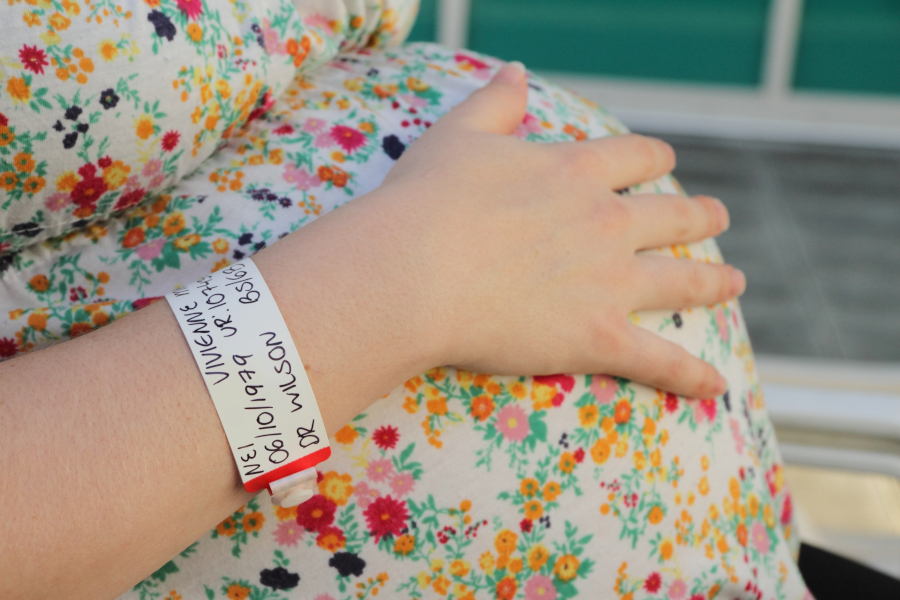
The third trimester of pregnancy can be physically and emotionally challenging. Your baby's size and position might make it hard for you to get comfortable. You might be tired of the pregnancy and eager to move on to the delivery. If you've been gearing up for your due date, you might be disappointed if it comes and goes and you are still pregnant.
Try to remain positive as you look forward to the end of your pregnancy.

As your pregnancy progresses, your baby's movements will become more obvious and sometimes more uncomfortable. These sensations are often accompanied by other signs and symptoms, including:
Braxton Hicks contractions. You might feel these mild, irregular contractions as a slight tightness in your abdomen. They're more likely to occur in the afternoon or evening, after physical activity or after sex. These contractions also tend to occur more often and become stronger as you approach your due date. Contact your health care provider if the contractions become regular and steadily increase in strength, particularly if it is many weeks before your due date.
Backaches. Pregnancy hormones relax the connective tissue that holds your bones in place, especially in the pelvis. These changes can be tough on your back and often result in discomfort during the third trimester of pregnancy. When you sit, choose chairs with good back support. Wear low-heeled — but not flat — shoes with good arch support. If you have severe or persistent pain, contact your health care provider.
Shortness of breath. You might get winded easily. Practice good posture to give your lungs the room they need to expand.
Heartburn. Pregnancy hormones relax the valve between your stomach and esophagus. This can allow stomach acid to reflux into your esophagus and cause heartburn. To prevent heartburn, eat small, frequent meals. Also, avoid fried foods, citrus fruits, chocolate, and spicy or fried foods. Contact your health care provider if heartburn becomes regular and a constant problem.
Spider veins, varicose veins, and hemorrhoids. Increased blood circulation might cause tiny red-purplish veins (spider veins) to appear on your face, neck, and arms. Redness typically fades after delivery. You might also notice swollen veins (varicose veins) on your legs. Painful, itchy varicose veins in your rectal area (hemorrhoids) may also occur. To ease swelling, exercise and elevate your legs frequently, include plenty of fiber in your diet and drink lots of fluids. For hemorrhoid relief, soak in a warm tub or apply witch hazel pads to the area. Contact your health care provider if these symptoms continue to be a problem. Do not start any medications, even over-the-counter topical creams or ointments, without contacting your health care provider.
Frequent urination. As your baby moves deeper into your pelvis, you'll feel more pressure on your bladder. You might find yourself urinating more often. This extra pressure might also cause you to leak urine — especially when you laugh, cough, sneeze, bend, or lift. If you think you might be leaking amniotic fluid, contact your health care provider.
As anticipation grows, fears about the delivery might become more persistent. How much will it hurt? How long will it last? Can I do this? You can consider taking childbirth classes. You'll learn what to expect and meet others who share your excitement and concerns. Talk with others who've had positive birth experiences. To help with your fears ask your health care provider about options for pain relief.
The reality of parenthood might begin to sink in as well. You might feel anxious, especially if this is your first baby. It's helpful to plan ahead. If you'll be breastfeeding, you might get a nursing bra or a breast pump. If you're expecting a boy — or you don't know your baby's sex — think about what's right for your family regarding circumcision. There are many books and magazines that you can read that offer great information about pregnancy, delivery, and the immediate post-partum period.

During the third trimester, your health care provider might ask you to come in for more frequent checkups — perhaps every two weeks beginning at week 32 and every week beginning at week 36. This is normal.
Like during previous visits, your health care provider will check your weight and blood pressure and ask about any signs or symptoms you're experiencing. In some cases, virtual prenatal care may be an option if you don't have certain high-risk conditions. To make the most of any of your visits, prepare a list of questions ahead of time and take detailed notes.
If you haven't yet received a COVID-19 vaccine, talk to your health care provider about the COVID-19 vaccine. Vaccination can help pregnant women build antibodies that protect themselves and their babies. If possible, people who live with you should also be vaccinated against COVID-19. Be sure to talk to your health care provider about the COVID 19 vaccine and other vaccines that you could get to help protect you and your baby.
You will also need screening tests for various conditions, including:
Your health care provider will also check your baby's size and heart rate. Near the end of your pregnancy, your health care provider will also check your baby's position and ask about your baby's movements. He or she might also ask about your preferences regarding labor and pain management as you get ready for delivery. If you have specific preferences for labor and delivery, such as laboring in water or avoiding medication, talk with your health care provider before you go into labor, but keep in mind that pregnancy or delivery problems might cause plans to change.
As your due date approaches, keep asking questions. Knowing what to expect can help you have the most positive birth experience.
Pregnancy and fetal development have characteristic and predictable stages that can be seen or not seen, felt or not felt, and understood or not understood. After fertilization the embryo quickly begins to grow, change, and show characteristic signs and stages of human development. During the 40 weeks of gestation a single cell develops into an embryo consisting of thousands of cells and culminating in the delivery of a fully formed infant. Here are presented the changes seen in fetal development during the third trimester.
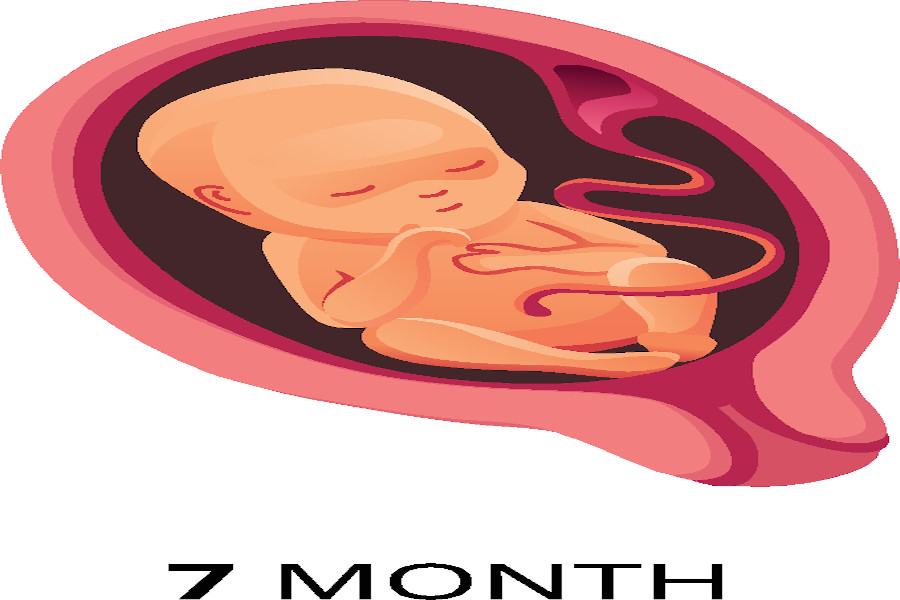
At the start of the third trimester, you can know the sex of your baby. Fetal movement will likely be regular and at times uncomfortable. The baby’s eyes are partially open and sometimes blink.
The baby has lungs that are capable of breathing. The central nervous system can control body temperature. The baby is making its own red blood cells in the bone marrow.
Your baby can kick, stretch, and make grasping movements.
Your baby probably has a good head of hair. Lungs are not quite fully formed, but the baby can practice breathing. The fetus can absorb iron and calcium from its intestines.
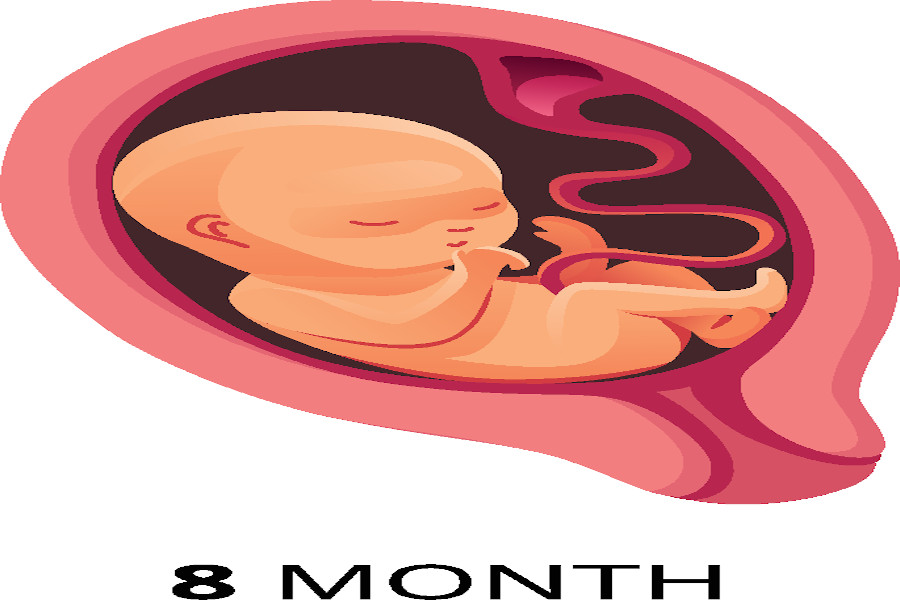
At this stage of development your baby has finished most of his or her major development. Now it’s time to gain weight, fast!
The layer of soft downy hair, lanugo, that covered your baby’s skin starts to fall off. The skin is pink or dark pink and smooth. Fingernail and toenails are fully formed.
Your baby’s pupils can change size in response to a bright light. The bones are hardening except for the skull. It remains soft and pliable.
The fetus is rounder and plumper. As the baby grows it becomes harder to move around, the uterus is only so big. You may feel your baby stretch, turn from side to side, roll, and wriggle.
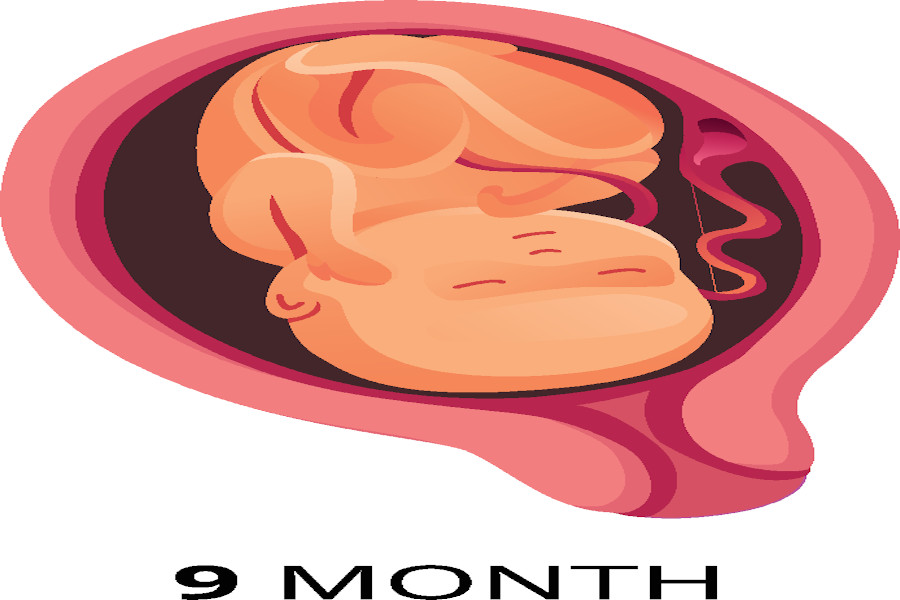
Your baby’s skin is nice and smooth. It’s getting pretty tight inside the uterus.
The crowded condition inside the uterus makes it harder for your baby to kick or throw a punch. You will still feel your baby move and now is the time the fetus starts to turn head down.
The baby has a firm grip and is getting ready to be born. The fetus should be head down, your health care provider will be checking for this.
Your baby might weigh 6-1/2 pounds now. Brain connections are forming so they will be able to swallow better once they are born. The circumference of your baby’s head and abdomen are about the same.
At this stage of development your baby’s chest is becoming more prominent. For boys, the testes continue to descend into the scrotum. More fat is being stored all over your baby’s body to keep him or her warm after birth.
At this stage of development your might have a crown to rump length of about 14 inches and weigh over 7lbs. Healthy babies come in all different sizes. Don’t be alarmed if your due date comes and goes and you haven’t delivered. Your due date is simply a calculated estimate of when your pregnancy will be 40 weeks. It does not estimate when your baby will arrive. Many first babies are delivered “late” or after their calculated due date.

Now it’s time to enjoy your newest family member. You can look forward to many sleepless nights, being spit up on your best clothes, being urinated on in the face, cleaning and changing countless diapers, feeling like a dairy cow, and many more marvelous, sometimes once in a lifetime, set of feelings and experiences. Congratulations!!
The information is presented to be a general guide to present the events surrounding fetal development. It is for informational purposes only. The information provided is not intended to be the only information available concerning fetal development during the third trimester. The material provided is not expected to be a substitute for advice or information from your physician or health care provider.
If you have any questions, concerns, apprehensions, unease, or worry about your fetus’ development contact your health care provider immediately.
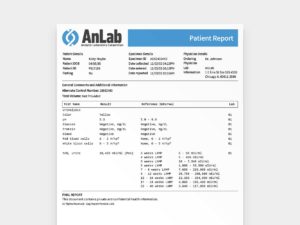
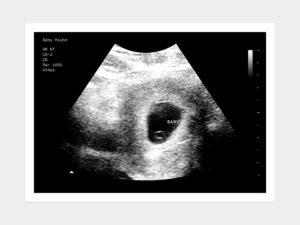
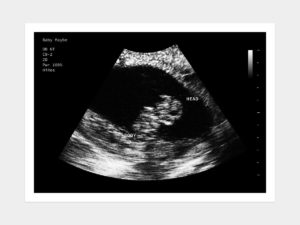

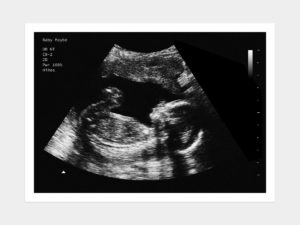



ALL WARRANTIES OF ANY KIND WHATSOEVER EXPRESS, IMPLIED, AND STATUTORY, ARE HEREBY DISCLAIMED. ALL IMPLIED WARRANTIES OF MERCHANTABILITY AND FITNESS FOR A PARTICULAR PURPOSE ARE HEREBY DISCLAIMED. THE PRODUCTS SOLD, INCLUDING SONOGRAMS, ULTRASOUNDS, FAKE PREGNANCY DOCUMENTS, AND FAKE PREGNANCY TESTS ARE SOLD ‘AS IS’ BASIS.
THE SITE CANNOT AND DOES NOT CONTAIN [MEDICAL/ LEGAL/ FITNESS/ HEALTH/ OTHER] ADVICE. THE INFORMATION IS PROVIDED FOR PRANKS PURPOSES ONLY AND IS NOT A SUBSTITUTE FOR PROFESSIONAL ADVICE.
ACCORDINGLY, BEFORE TAKING ANY ACTIONS BASED UPON SUCH INFORMATION, WE ENCOURAGE YOU TO CONSULT WITH THE APPROPRIATE PROFESSIONALS. WE DO NOT PROVIDE ANY KIND OF MEDICAL/ LEGAL/ FITNESS/ HEALTH ADVICE. THE USE OR RELIANCE OF ANY INFORMATION CONTAINED ON THIS SITE, OR OUR MOBILE APPLICATION, IS SOLELY AT YOUR OWN RISK.
THIS WEBSITE DOES NOT PROVIDE MEDICAL ADVICE. THE INFORMATION, INCLUDING BUT NOT LIMITED TO, TEXT, GRAPHICS, IMAGES AND OTHER MATERIAL CONTAINED ON THIS WEBSITE ARE FOR PRANK PURPOSES ONLY. NO MATERIAL ON THIS SITE IS INTENDED TO BE A SUBSTITUTE FOR PROFESSIONAL MEDICAL ADVICE, DIAGNOSIS OR TREATMENT. ALWAYS SEEK THE ADVICE OF YOUR PHYSICIAN OR OTHER QUALIFIED HEALTH CARE PROVIDER WITH ANY QUESTIONS YOU MAY HAVE REGARDING A MEDICAL CONDITION OR TREATMENT AND BEFORE UNDERTAKING NEW HEALTH CARE REGIMEN, AND NEVER DISREGARD PROFESSIONAL MEDICAL ADVICE OR DELAY IN SEEKING IT BECAUSE OF SOMETHING YOU HAVE READ ON THIS WEBSITE.
THE PARTIES AGREE THAT ANY PRODUCT PURCHASED ON THE BABY MAYBE WEBSITE SHALL NOT BE USED FOR ANY PROPOSE OTHER THAN AS A PRANK. WITHOUT EXCEPTION NO BABY MAYBE PRODUCT SHALL BE PROVIDED/SUBMITTED TO ANY GOVERNMENTAL OR OTHER AGENCY, MEDICAL DOCTOR, ARBITER OF A DISPUTE, AS PROOF OF PREGNANCY, PAST OR CURRENT, OR TO CLAIM ANY BENEFIT FOR WHICH A PREGNANT WOMAN MAY BE ELIGIBLE, OR ENTITLED TO RECEIVE, BASED ON HER BEING PREGNANT. NO HIPAA PROTECTED PATIENT HEALTH INFORMATION CONNECTED TO ANY BABY MAYBE PRODUCT, IS INTENDED, OR CONVEYED, WITH RESPECT TO THIS SALE.
THE PARTIES AGREE THAT BABYMAYBE IS NOT RESPONSIBLE FOR ANY LIABILITY WHATSOEVER FOR DELAYS IN SHIPPING THE PRODUCT. THE PARTIES FURTHER AGREE THAT THE SOLE REMEDY FOR ANY SHIPPING DELAYS IS THE REFUND OF THE PURCHASER’S PAYMENT FOR THE PRODUCT.
THE PARTIES AGREE THAT THE FORUM FOR ANY LEGAL ACTION ASSOCIATED WITH THE SALE AND PURCHASE OF THE PRODUCT IS THE STATE OF ILLINOIS.